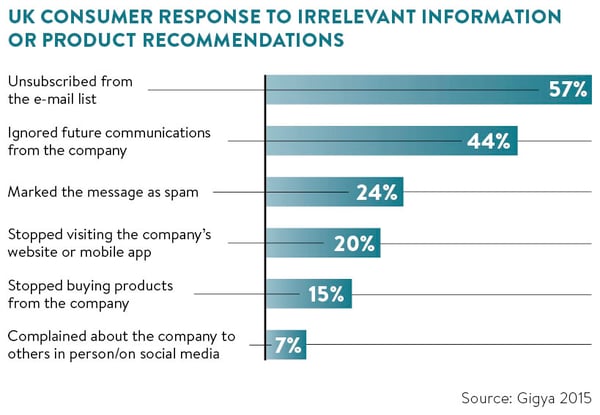How personalization helps companies to boost online sales
You've probably heard the words 'big data', 'data-driven', and 'personalisation' before. These concepts have become more and more popular in every industry, especially for those who sell online.
Selling online is an art, and is not as easy as many people think. Conversion rates in physical stores are way bigger than in online stores, even though you reach a lot more potential clients on the web. It happens because on the internet you don't usually have a salesman ready to answer any questions from your customers.
You didn't have, actually.
With the democratisation of Artificial Intelligence and many big data tools that allow you to analyse information and offer better online experiences to your customers, it feels as if you have it now. You can analyse data and tailor offers, providing visitors with relevant information and creating a win-win environment where they enjoy a personalised service and your business increase direct sales.
This is what some people call 'The new economy'. It's data-driven and consumer-led. In this scenario, companies that are not personalising experiences are potentially losing opportunities. Marketing does not ends right after you've attracted visitors to your page. It's a long journey and this is where personalisation can be very effective.
Old marketing practices that use generalist approaches are not creating value anymore. Spending thousands of Euros on TV advertising doesn't make a lot of sense, as it's not going to be relevant, or even noticed, most of the time. They don't differentiate audiences and end up adding every potential client (you are allowed to read everyone if you want) in the same bucket.
At the same time that this whole approach changes, the product commoditisation is also going on. It means that multiple venues can sell the same product at the same time. And how can someone thrive in this highly competitive environment? The answer lies in improving your customer's experience. It can be the real difference between selling or losing a client.
The era of information
As we talk about eras, we are currently living in the era of information. People, in general, have a lot more access to information, and this information is decentralised. People have a lot more trust in social reviews than the sellers. They are connected on-the-go, with millions of smartphones that gave them the ability to research anything, anywhere, at any time. They exchange information with each other and don't even look at what is not relevant to them.
Relevancy is the way to be noticed in the era of information. In this graphic below you can see how people respond to irrelevant content, and how you can lose a client forever if you choose the wrong approach.

Source:Raconteur.
Consumers are not really interested in irrelevant content. But, how can you ensure relevancy? The answer is simple: by understanding your audience and delivering the right message, at the right time, through the right channel. Sounds easy? It's not quite when we talk about millions of users browsing the web simultaneously. But the good news is that there are specialised tools using computer power, demand-tracking, pricing algorithms, and other technologies to make it possible for companies of any size to understand scenarios and offer dynamic and personalised solutions. It, by the end of the day, leads to a high sense of relevancy, contributes to a higher engagement, and, ultimately, for higher conversions.
Personalize your online clients' experiences. Click here and meet Convious!
Personalization and sales
In summary, companies should use the technology in their favour to understand the visitors and engage in a way that will motivate them to keep going through the funnel. When done correctly, personalisation builds trust, and allows companies to understand their clients and to sell more. As this concept evolves, more and more companies are adopting it and getting excellent results.
A very common example of personalisation is dynamic-pricing. First adopted by American Airlines nearly 40 years ago, dynamic pricing is becoming very popular in many industries, from Uber to Disney, passing by museums, zoos, and a lot of other types of businesses. This is just the beginning of this technology applied to real life. As this concept matures inside the consumers' minds, it's very likely that more and more companies adopt this strategy to increase their profit and optimise their return on dates, times, and locations that don't usually have high demand.
Related post: 5 strategies for conversion optimization
The question from now on is, are you personalising your clients' experiences? Are you able to tailor messages, prices, or any kind of information to make it relevant to your audience? If you answered no to any of these questions you better start reviewing your strategy. Personalisation is here to stay and, as mentioned earlier, you may be already losing a lot of opportunities in your market right now.
Liked the content? Our experts would love to hear from you and keep the conversation going!